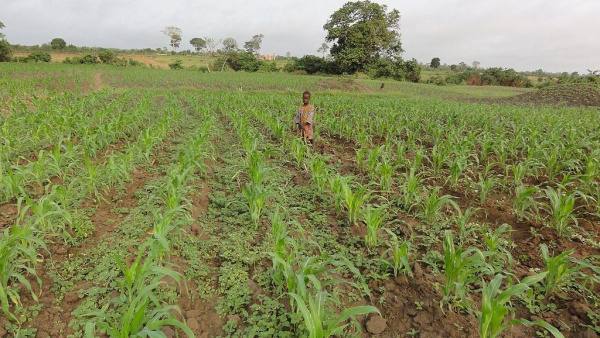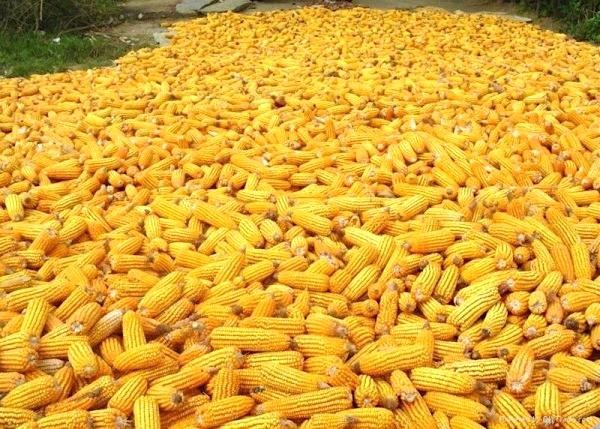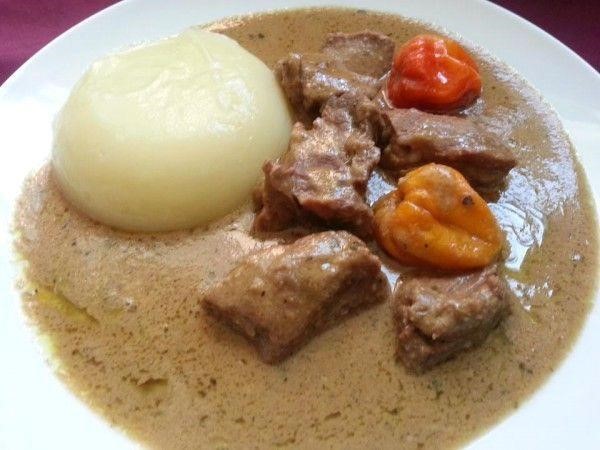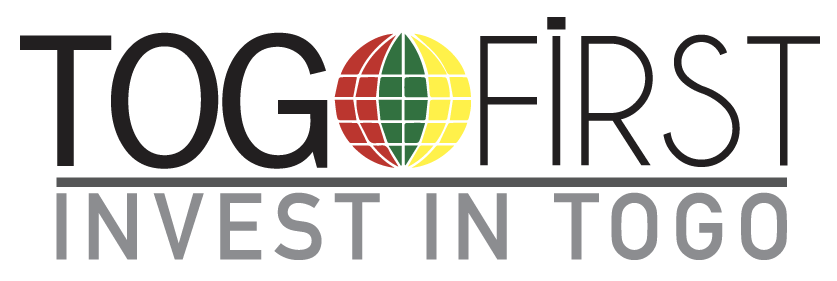An overview of agriculture in Togo: present and future...

(Togo First) - Agriculture contributes more than 40% of Togo’s GDP and employs nearly 65% of its active population. Also, arable lands expand over 3.6 million hectares, which is 60% of the Togolese territory. Out of this area, 1.4 million hectares or 41% of the total area are sown. Given its importance, the sector holds a significant position in the recently launched national development plan (under the second axis) which runs from 2018 to 2022.
Contrasting with the fact that agriculture is such an important driving force for the economy is the extremely low level of lending to this sector (2% of bank loans in 2019), and weak technical support (only 25% of farms receive technical support of monitoring structures), only 16% of the farms use fertilizers, and 89% of the cultivated areas have been using archaic equipment (hoe and cutlass).
Moreover, yields from one region to another are uneven, with the lowest production area being the Savanes region - a zone that is exposed to a reduction in forest areas and land pressure.
Regarding its soil, Togo has relatively rich soils (maize is grown on most of them). Lands in the Plateaux region are known for being fertile whereas, in Kara, lands are difficult to exploit due to the region’s rocky geomorphology.
Green revolution
Since 1975 when the country started its green revolution, it has made many efforts to remain self-sufficient in regards to the food it consumes (a feat it has successfully achieved in recent years). In this framework, Togo decreased the prevalence of undernourishment to 11.4% in 2014, from 16.5% in 2012. This was achieved through the national programme for agricultural investment and food security (PNIASA).
Today and tomorrow...
To date, many programmes have been launched to boost the country’s agricultural production. These are the Agricultural Development Support Programme (PADAT), the Agriculture Support Project (PASA which concerns husbandry and the vaccination of ruminants), the West Africa Agricultural Productivity Program (WAAPP-Togo), the Hydro-agricultural development of the Mono River’s lower valley (PBVM), the Rice Production Development Project in Kara (PDPR-K). There is also the agropole project which is currently underway in the Kara region.
Besides improving agricultural output, the government has mustered efforts to modernize the sector by improving farmers’ access to financing for better production, introducing agroforestry practices, enhancing agricultural research, mechanization, use of fertilizers, developing agricultural value chains, and helping agripreneurs emerge.

An example of a key project recently launched in this regard is the Project Supporting Youth Employment and Insertion in Profitable Sectors (PAEIJ-SP), or the Agricultural Financing Incentive Mechanism, launched on June 25, 2018. The latter aims to ease access to bank loans for actors of the agricultural value chain. In 2019, this mechanism granted more than XOF 3.8 billion loans to these actors. Nevertheless, banks still dedicate only 0.3% of their loan portfolio to the sector, every year. The government for its part wants to increase this figure to 5% by 2027, and reduce interest rate on the loans from 15% to 7.5%, ideally, but this rate should stabilize at 10.5%.
Also, in order to back the most vulnerable farmers, public authorities have put in place an annual subsidy ranging between XOF1.5 billion to XOF2 billion for fertilizer acquisition. Two years ago, they also developed an e-wallet, called AgriPME, for farmers. The platform which has more than 270,000 users at present allows them to carry out various transactions.
Last but not the least is the government’s very ambitious national development plan (PND 2018-2022). Among others, it aims to significantly boost agricultural output and agroindustrial transformation in Togo.
A look at some agricultural products of Togo
Food crops
Food crops make up 70% of all of Togo’s agricultural output. They are primarily destined to local consumption rather than exported. Regardless, they generate substantial, and “safe,” revenues for farmers, given the permanent demand of the domestic market. They include mainly grains and tubers. The first, grains, represent 56% of the calorie supply of plant-based foods consumed in Togo. In 2014-2017 alone, corn represented 51% of grains, followed by rice (20%), sorghum (17%) and wheat (9%). For tubers, the most consumed is cassava (61.8% of all tubers) followed by yam (37.8%).
Corn
It is grown by 1.5 million Togolese farmers across four agro-ecological zones, over more than 700,000 hectares (40% of total lands dedicated to food crops). Corn farming has kept increasing since 1990, in the northern region especially. For the 2018-2019 agricultural campaign, maize output stood at 886,630 tons.

In addition to being used for household consumption (both in rural and urban areas), it is also considered as a cash crop. Corn generates an average net income of XOF223,000 per hectare (latest data), making it the main source of revenue of farms, right after popular cash crops.
Rice
Most of Togo’s rice is grown in the Savanes region. For farmers, it is relatively expensive to cultivate and they struggle against imports from Asia mainly. To reverse this trend, various projects were recently launched to boost rice production, in the Djagblé plain especially. In 2018, Togo produced 145,000 tons of rice.
Sorghum and millet
Second-most grown grain, in terms of yield, sorghum is quite present in the farms of the Kara and Savanes regions. It is used mostly to make “tchoukoutchou”, a local drink. It is often grown together with millet. In terms of annual output, millet is the least popular grain in Togo. The combined outputs of sorghum and millet was at 303,000 tons in 2018.
Tubers (Yam and cassava)
Yam is mostly cultivated in Kpalimé and Bassar. It is mainly used to make “fufu,” which is a meal consumed in many West African countries. From 78,100 tons in 2015, Togo’s yam output rose to 859,000 tons in 2018.

As for cassava, it is produced only in the south (Agoè, Tabligbo, Tsévié, Vogan, Aného). It can also be used to prepare fufu or be transformed into gari or tapioca. Over the past five years, the country’s cassava production was around a million tons.
Legumes
Concerning legumes, Togo produces voandzou, beans, and groundnuts. For the latter, while annual yields were usually around 40,000 tons, they have been decreasing recently due to the closure of some peanut oil factories. In 2018, the country produced 208,000 tons of beans and cowpeas.
Export crops
These are mainly cotton, coffee, cocoa, and palm oil. However, since the start of the green revolution, others like shea nuts, kola, and cashew have also joined this category.
Cotton
Grown essentially in the Plateaux and Savanes regions, this cash crop recorded a major boom in 2011 and increased slightly the following year. In 2018 however, cotton output stood at 127,500 tons according to the BCEAO (exports to Europe generated more than $11 million). This year (2019-2020 campaign), cotton exports are expected to exceed 150,000 tons.
Coffee and cocoa
Both crops were introduced to Togo by the Germans during the colonial period. Together, they contribute 1.2% of the GDP and are grown by around 32,000 farmers.
The first, coffee, is cultivated in the Plateaux region (Kpalimé, Atakpamé, and Badou). Since 1990, Togo’s coffee production has been rising slowly: 11,000 tons in 1998 to 17,000 tons in 2003. Coffee farms cover more than 40,000 hectares. In the first quarters of 2017, 2018, and 2019 respectively, coffee outputs were 1,090 tons, 4,883 tons, and 3,465 tons (while exported volumes were 476 tons, 2,089 tons, and 2,379 tons in the same periods).
For its part, cocoa is almost solely cultivated in Kpalimé, Atakpamé, and Badou. They are known as the “triangle de café et de cacao” (the triangle of coffee and cocoa). At the beginning of the century, about 8,000 tons of the beans were produced, over more than 30,000 ha. In the first quarters of 2017, 2018, and 2019 respectively, cocoa yields stood at 1,326 tons, 1,660 tons, and 2,258 tons (while exports stood at 1,058 tons, 1,278 tons and 4,743 tons).
Organic farming
In the ECOWAS, Togo is the largest exporter of organic products to the European Union (EU). However, only 1% of the country’s arable lands are dedicated to organic farming. Also, this sector employs only about 40,000 people. It is driven by a strong external demand, especially for soybeans.
Soybeans
In the past three years, the production of this crop soared from 24,000 tons to 35,000 tons. The sector employs nearly 300,000 people and soybeans is grown over around 67,000 hectares, which is 38% of the total area on which legumes are grown across the territory.
Togo has one of the best yields in West Africa (3t/ha), with a turnover of XOF6.8 billion. Leveraging a strong global demand for organic products, it is produced mainly for export. This year, the country launched the very first regulated campaign and it expects to sell 78,000 tons of soybeans.
A few other cash crops
Besides these cash crops, there is also palm oil (which is grown over around 7,000 ha, for an output of 61,800 tons in 2017), and pineapple (3,300 tons produced in 2018, generating XOF1.5 billion in exports the same year).
